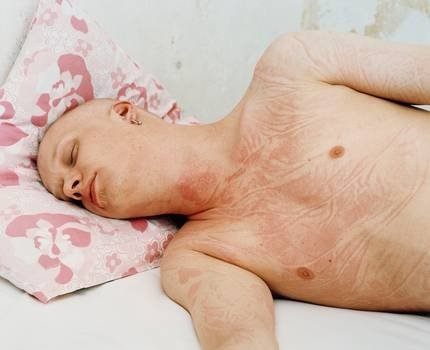Mauricio Dias
Walter Riedweg
Ulrika Ferm
Charlotte Gyllenhammar
Jukka Korpihete
Tuomas Laitinen
Jani Leinonen
Liisa Lounila
Bjarne Melgaard
Kukka Paavilainen
Mimmo Rotella
Jani Ruscica
Riiko Sakkinen
Cory Arcangel
Jiri Geller
Ilmari Gryta
Juha van Ingen
Humberto Junca
Anssi Kasitonni
Jani Leinonen
Roy Lichtenstein
Zoltan Popovits
Heikki Ryynanen
Lena Seraphin
Zhao Shaoruo
Adel Abidin
Vito Acconci
Eija-Liisa Ahtila
Stig Baumgartner
Peter Buggenhout
Mervi Buhl-Kytosalmi
Richard Deacon
Lucio Fontana
Veli Grano
Terike Haapoja
Annika von Hausswolff
Maarit Hohteri
Aarne Jamsa
Marja Kanervo
Aino Kannisto
Hannu Karjalainen
Jouko Lehtola
Anni Leppala
Cristina Lucas
Pekka Luukkola
Arno Rafael Minkkinen
Fanni Niemi-Junkola
Zoltan Popovits
Laila Pullinen
Seppo Salminen
Anssi Torronen
Milja Viita
Pinar YolacanViita
Pinar Yolacan
26/3/2009
Tracking Traces
Kiasma, Helsinki
Kiasma's tenth collection exhibition, explores cultural traces through 122 works by 51 artists. The show is divided into three thematic sections: Smudge, Bar Code and Imprint. Each section also includes past contemporary artworks. "The world that surrounds us is full of signs and messages - traces of the world that contemporary art makes use of by copying, recycling, sampling and commenting on them. Traces can be found near and far: on the human body, in advertising images, on cereal packets and in the urban space. The traces can be physical imprints, visible signs, actions or memory traces."

The world that surrounds us is full of signs and messages – traces of the world that contemporary art makes use of by copying, recycling, sampling and commenting on them. Traces can be found near and far: on the human body, in advertising images, on cereal packets and in the urban space. The traces can be physical imprints, visible signs, actions or memory traces. Some of the traces are left consciously, others are accidental. The one thing shared by the traces in the exhibition's works is that they transmit as well as shape our idea of ourselves and of the world. They are about life and the need for interaction.
This, Kiasma's tenth collection exhibition, explores cultural traces through 122 works by 51 artists. The exhibition is divided into three thematic sections: Smudge, Bar Code and Imprint. Each section also includes past contemporary artworks.
Contemporary cities are teeming with messages that use signs which are intended to guide, attract or limit us in some way. There are also signs left by the citizens. Marks left by car tyres on the asphalt, stickers, posters, roadwork signs, graffiti and also sounds are all ways of temporarily reserving part of the urban space for some particular purpose. Signs tells us something about whoever put them up, but they can also be used to propagate and communicate attitudes, ideas and comments.
Works explore signs as active messages, viewpoints and expressions of opinion. They also include traces in the mind, such as memories of upheavals or faded images of products from the past.
Artists: Mauricio Dias & Walter Riedweg, Ulrika Ferm, Charlotte Gyllenhammar, Jukka Korpihete, Tuomas Laitinen, Jani Leinonen, Liisa Lounila, Bjarne Melgaard, Kukka Paavilainen, Mimmo Rotella, Jani Ruscica, Riiko Sakkinen
The world abounds in reinterpreted images. Product images, ads and logos are the currency of signs in contemporary art. The bar code, familiar from the world of trade and commerce, contains coded information about a product. Contemporary art occasionally operates in a similar way; a familiar thing is presented in a new context or in a different package. Searching for material for their work, artists sometimes explore the history of art, or borrow elements from the world of entertainment or advertising. A reinterpretation often reveals the artificiality of things.
The works comment on everyday things, either tongue in cheek or by challenging accepted truths. By presenting things in new ways, the works also challenge our ideas as to what art should be about and how it should be made.
Artists: Cory Arcangel, Jiri Geller, Ilmari Gryta, Juha van Ingen, Humberto Junca, Anssi Kasitonni, Jani Leinonen, Roy Lichtenstein, Zoltan Popovits, Heikki Ryynänen, Lena Séraphin, Zhao Shaoruo
Life's traces are seen as imprints on the body, as sleep wrinkles, bites or bruises. Traces such as fingerprints, handprints or other bodily marks in the works are direct imprints of the artist, a kind of personal stamp. An imprint can also be indirect, as for example a depression on the surface of a sculpture made by an explosion. Imprints in some of the works point to memories or some long-forgotten event. An imprint left by a memory can often be more permanent than one left on the body.
The starting point of is the human body and the traces left by and on the body. The works bear witness to the many different ways in which interaction with our visual environment can take place also through the body.
Artists: Adel Abidin, Vito Acconci, Eija-Liisa Ahtila, Stig Baumgartner, Peter Buggenhout, Mervi Buhl-Kytösalmi, Richard Deacon, Lucio Fontana, Veli Granö, Terike Haapoja, Annika von Hausswolff, Maarit Hohteri, Aarne Jämsä, Marja Kanervo, Aino Kannisto, Hannu Karjalainen, Jouko Lehtola, Anni Leppälä, Cristina Lucas, Pekka Luukkola, Arno Rafael Minkkinen, Fanni Niemi-Junkola, Zoltan Popovits, Laila Pullinen, Seppo Salminen, Anssi Törrönen, Milja Viita, Pinar YolacanViita, Pinar Yolacan
Image: Maarit Hohteri, Mikko, Sleep Markings, Helsinki, 2000, Photo: Petri Virtanen / Central Art Archives
Communications Manager Kaija Suni
+358 (0)9 1733 6507 kaija.suni@kiasma.fi
Kiasma
Mannerheiminaukio 2 - Helsinki
Opening hours:
Tue: 10-17
Wed-Fri: 10-20.30
Sat-Sun: 10-18
Closed on Mondays
Admission
Tickets 7e/5e
Under 18 year-olds free.



